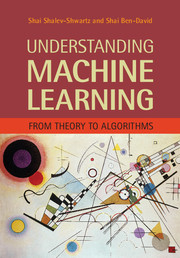Preface
Published online by Cambridge University Press: 05 July 2014
Summary
The term machine learning refers to the automated detection of meaningful patterns in data. In the past couple of decades it has become a common tool in almost any task that requires information extraction from large data sets. We are surrounded by a machine learning–based technology: Search engines learn how to bring us the best results (while placing profitable ads), antispam software learns to filter our email messages, and credit card transactions are secured by a software that learns how to detect frauds. Digital cameras learn to detect faces and intelligent personal assistance applications on smart-phones learn to recognize voice commands. Cars are equipped with accident-prevention systems that are built using machine learning algorithms. Machine learning is also widely used in scientific applications such as bioinformatics, medicine, and astronomy.
One common feature of all of these applications is that, in contrast to more traditional uses of computers, in these cases, due to the complexity of the patterns that need to be detected, a human programmer cannot provide an explicit, fine-detailed specification of how such tasks should be executed. Taking examples from intelligent beings, many of our skills are acquired or refined through learning from our experience (rather than following explicit instructions given to us). Machine learning tools are concerned with endowing programs with the ability to “learn” and adapt.
The first goal of this book is to provide a rigorous, yet easy-to-follow, introduction to the main concepts underlying machine learning: What is learning?
- Type
- Chapter
- Information
- Understanding Machine LearningFrom Theory to Algorithms, pp. xv - xviPublisher: Cambridge University PressPrint publication year: 2014

